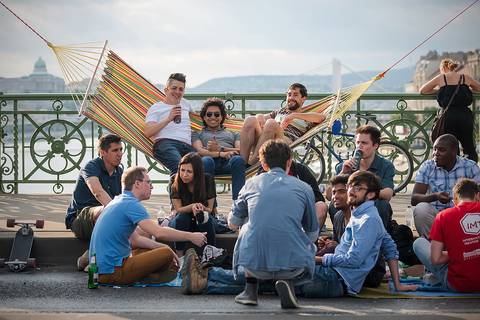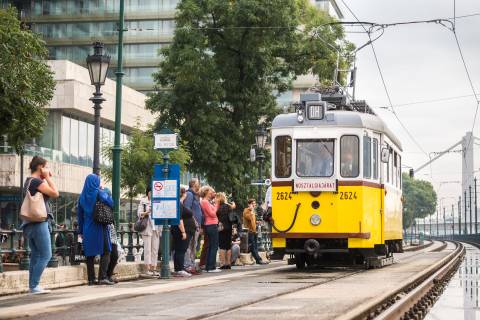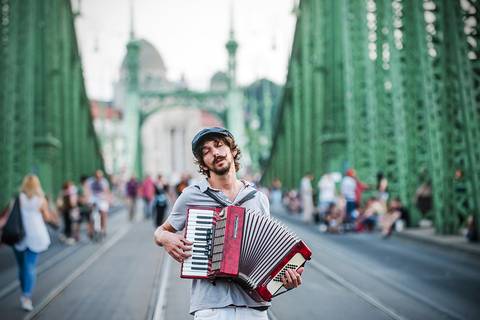Mighty stone columns that vanish into thin air, shelves of books that seamlessly morph into walls of bricks, and mirrors that reflect in multiple directions at once – all of these inconceivable sights are common presences in the astounding oeuvre of world-renowned Magyar artist István Orosz.
As Hungary’s most accomplished illustrator of impossible constructions, István Orosz draws clear inspiration from the mind-blowing works of M. C. Escher, but over several decades this Kecskemét-born multimedia virtuoso has developed a truly unique style that continually plays with the perspective of viewers. Now the public is welcome to gaze at a wide-ranging assortment of István’s works in a newly opened exhibit of his etchings at the venerable Koller Gallery atop Castle Hill – located within the former atelier of ingenious Hungarian sculptor Amerigo Tot – alongside amazing works by contemporary Latvian artist Guntars Sietins.

After studying art and design in Budapest in the 1970s under the tutelage of Ernő Rubik (the inventor of his eponymous puzzle cube), István embarked on his creative career as a theatrical stage designer and animator, always experimenting with geometrical principles to create visual paradoxes. Over time István began specializing as a poster designer and printmaker, and by the mid-1980s he gained acclaim for creating surreal images presenting double meanings, optical illusions, and hidden presences with traditional printing methods like etching and woodcutting, which he continues producing to this day.

Almost all of István’s images are intricately rendered with fine details, adding to the verisimilitude of each picture so that the eye is thoroughly and repeatedly tricked depending on what part of the graphic is being examined; for example, in “Library II” (2014), a solitary figure draws before an interior bookshelf while looking out of a tall window, but when the viewer scans upward, the window now appears to be seen from outside, facing a different direction and surrounded by lush ivy – yet these contradictory visions appear together in harmony when looking at the scene as a whole.

Similarly, “Santo Stefano Rotondo paraphrase III” (2000) portrays a majestic round chamber where sheep roam freely beneath an overhead oculus supported by stone columns… but the shadowy columns emerging from the floor in the foreground ascend to become nothing more than empty space between the sunlit column tops affixed to the ceiling in the background; a single lamb stands at the center of it all, caught in the otherworldly plane connecting everything.

Not all of István’s pictures depict geometric impossibilities, but many of them instead conceal hidden images – many of which are only revealed when the viewer literally changes their perspective toward the illustration. In “Shakespeare” (1987), we initially see a wide-framed depiction of London’s legendary Globe Theatre, replete with detailed characters and complex woodwork supporting the circular roof – however, when viewed from either side at an angle, the picture transforms into a carefully proportioned impressionistic portrait of the Bard of Avon.

As an appropriate accompaniment to István’s works, the new exhibit also features several intriguing images by modern Latvian printmaker Guntars Sietins, who uses the meticulous method of mezzotint to create delicately shaded graphics, often centered by a selectively reflective sphere to shine clandestine messages into the eyes of viewers. Presented side by side, these pleasantly bizarre portrayals provide viewers with innumerable surprises enveloped by blatant beauty.The dual exhibition of works by István Orosz and Guntars Sietins is on view through October 5 at Koller Gallery (Buda I, Táncsics Mihály u. 5); check out www.kollergallery.com for more details.




